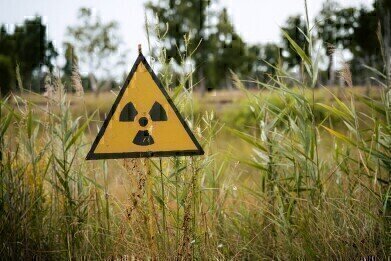Hazardous Waste
What's Classed as a Hazardous Spill?
Dec 07 2022
Spills are an unfortunate but inevitable part of human life. From spilling hot coffee onto our lap to milk onto the kitchen floor, spills happen to the best of us and most of the time, they don’t pose too much of a problem to clean up. However, certain substances can endanger public and environmental health, which means they demand specialist attention immediately.
These spills are classed as hazardous and can take a number of different forms, from biological agents to dangerous chemicals to radiological waste to flammable substances. Of course, these spills are far more likely to occur in an industrial workplace than a domestic setting, but it’s important nonetheless to understand how they are classified so that the appropriate course of action can be followed when one occurs.
What qualifies as a hazardous spill?
A hazardous spill is the accidental leaking of any substance which could have short-term or long-term impacts on human and environmental health. They can take gaseous, liquid or solid form and, depending on the nature of the substance in question, can be dangerous to those who come in contact with them, either by touching, ingesting or inhaling them.
These substances are not just problematic for the humans in their immediate vicinity, however. If not properly addressed, they can leach into the surrounding environment and degrade soil, water and air quality, potentially having huge repercussions on the flora and fauna which grows and lives there. Indeed, they can even contaminate the food chain and eventually imperil human life indirectly in this way, as well.
What are the different types of hazardous spills?
There are a huge number of substances which could be classed as hazardous and the list is far too long to enumerate here. However, they generally fall into the following broad categories:
- Biological organisms and agents. If organic matter, animals or people are infected with a hazardous substance or toxin, they could endanger the health of others, especially in the case of contagious pathogens.
- Chemicals. Some chemicals contain heavy metals which can bioaccumulate in the atmosphere and build up to dangerous concentrations. Meanwhile, so-called “forever chemicals” can persist in the environment for an extremely long period of time and little is known about their long-term effects.
- Radiological waste. Nuclear energy is a sustainable and largely clean source of power, but the waste generated by nuclear plants must be very carefully disposed of or it could endanger human and environmental health.
- Flammable or explosive substances. If chemicals or other substances are flammable, they could ignite in the presence of a naked flame or even when reacting with certain ambient gases. This could result in fire or explosion, which poses obvious risks for people and animals in the vicinity.
Of course, these categories are merely a brief introduction to the subject of hazardous spills and those interested in learning more should seek assistance from trained professionals or enrol in an educational course to expand their understanding and ability to deal with accidents and emergencies.
Events
WEATHER • CLIMATE • WATER / EARTH OBSERVATIONS / GREEN ECONOMY
Oct 29 2024 St. Petersburg, Russia
Oct 30 2024 Hong Kong
Nov 05 2024 Toronto, Canada
Nov 06 2024 Ho Chi Minh City, Vietnam
Nov 12 2024 Valencia, Spain













